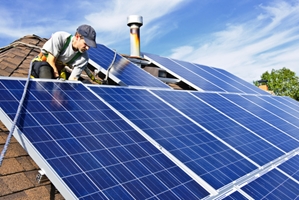The military has made a strong push to become more energy efficient in recent years, and nowhere is that more evident than at their bases around the country. Many installations have implemented solar panels, a recent report from the Solar Energy Industries Association (SEIA) revealed that they are creating an estimated 130 megawatts. Although the Armed Forces still has a long way to go until they reach their eventual goal of having solar power be responsible for 58 percent of its renewable energy, experts are encouraged by the progress.
Saving money, saving lives
Part of moving to more renewable sources of energy is about helping the Pentagon cut spending, but it is also about protecting troops. For instance, switching to solar power will help the military reduce its dependence on foreign sources of power that can often be unstable. Not only that, but focusing on alternative sources slashes the number of trucks necessary to transport fuel, and these convoys are often prime targets for improvised explosive devices and other attacks. Experts also say that this move toward going green can help troops find jobs after separating from service.
"After using solar energy on military bases and in the field, many returning servicemen and servicewomen are finding great career opportunities at solar firms, which have been actively recruiting veterans." said Rhone Resch, SEIA president and CEO. "Many other veterans have started firms of their own."
Fort Bliss stands tall
While the entire military has made an effort to go green, Texas' Fort Bliss is among the best, reports Stars and Stripes. Earlier this month it became the first DOD installation to operate on the microgrid, which allows officials to collect solar energy and save it for later use. This is especially important because it means that Fort Bliss will not suffer in the event of a power outage caused by a cyber attack or other unforeseen circumstances.
Long road ahead
The military has undoubtedly made great strides in its efforts to use renewable energy and alternative fuels, but it has a lot more work to do. According to the publication, Congress mandated that the Pentagon needs to generate 25 percent of its entire energy supply by renewable sources by 2025, and there remains an increased focus on biofuels.

